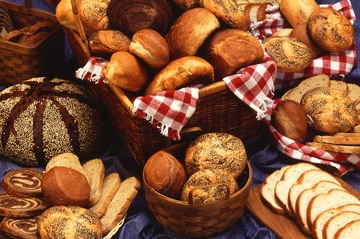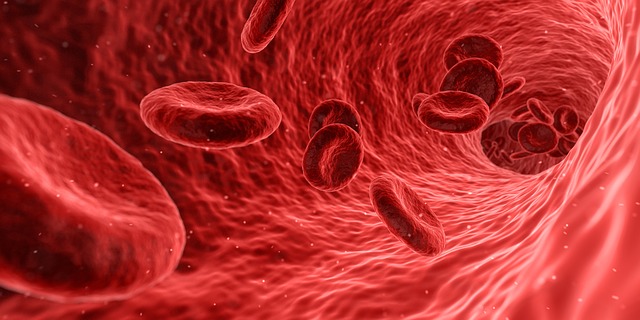In the scientific, bodybuilding, nutritionist, medical and other literature and schoolbooks, it is widely accepted that carbohydrates are the best source of energy for the body. Which is to say, they say the body should mainly get its energy from glucose.
 In their recommendations for daily healthy food it’s said that the greatest part, i.e. 45-65% of the food calories should be obtained from carbs. That means bread, pasta, cereals, rice… And it sounds very “healthy” when they say that mainly processed carbohydrates should not be taken, but whole grains. It sounds.
In their recommendations for daily healthy food it’s said that the greatest part, i.e. 45-65% of the food calories should be obtained from carbs. That means bread, pasta, cereals, rice… And it sounds very “healthy” when they say that mainly processed carbohydrates should not be taken, but whole grains. It sounds.
But in the real world those recommendations are surefire recipe for chronically elevated insulin.
All carbs from the food, no matter if they are coming from bread, beans, rice, chocolates, snacks, oats, fruits, pure sugar, etc., in the blood are broken down to a simplest form of sugar: glucose.
The term glucose comes from the Greek word glukos, which means sweet.
(Dietary fibers, i.e. the parts from the plants and seeds that do not dissolve in the body, are considered as carbohydrates, but they have no caloric value. When we say carbohydrates here, we exclude dietary fiber from that meaning).
When we say carbs we mean sugar; that’s what they eventually turn into in the blood. And to mention: the bread, the pasta, the rice, the oat are not 100% carbohydrates. Bread contains 50% carbohydrates, rice 70%, oats 65%, sugar 100%.
According to some health organizations for heart health protection, it’s normal for women to take daily not more then 25 grams of added sugar, and for men 30 grams (some say even 50). And they say that the bad thing about added sugar is that it gives calories, but it doesn’t give essential nutrients. And that the sugar that can be naturally found in food doesn’t count as added sugar and doesn’t come under these 25-30 grams (and a conclusion: it’s not “dangerous” for the heart). And the 45-65% from the calories coming from carbs is cool.
45-65% carbohydrates with 25-50 grams of sugar daily?
Maybe it sounds logical, but it has noting to do with the truth.
They even advise that “healthier variants” – fruits – should be eaten instead of sugar from sweets; instead of muesli with added sugar, to eat muesli without added sugar; instead of soda, skim milk. They don’t mention that most of the carbohydrates you eat are converted into sugar (glucose) in the blood. And those from the muesli and the rice and the oats. Yes, we know this sounds unconventional. Especially in a culture in which it’s conventional to have such a high rate of heart diseases. That’s why it’s no wonder heart diseases (statistically, number 1 global cause of death) are continually and still rising. Normally, such an advanced, modern and conventional carbs education goes hand in hand with the steep rate of obesity all over the world.
Whether you will take pure glucose. white sugar, brown sugar, beans, honey, oats, grains, pasta… – the glucose that is produced from them in the blood is IDENTICAL.
They say the brain works on glucose, the muscles, the organs – the whole body depends on carbs for energy.
Not really.
The truth is that the red blood cells need glucose, and a small portion of the brain’s energy must come from glucose. But that glucose doesn’t have to come from the diet.
 [The red blood cells are cells in the blood that are colored red and are responsible for carrying oxygen from the lungs to other cells in the body. The other cells are using that oxygen to get energy by breaking down the food we take. That combustion produces a byproduct: the gas carbon dioxide. The red blood cells carry the carbon dioxide back to the lungs, which is released by exhalation.]
[The red blood cells are cells in the blood that are colored red and are responsible for carrying oxygen from the lungs to other cells in the body. The other cells are using that oxygen to get energy by breaking down the food we take. That combustion produces a byproduct: the gas carbon dioxide. The red blood cells carry the carbon dioxide back to the lungs, which is released by exhalation.]
Fats are the best source of energy.
Physically and mathematically, the process of using fats gives greater amounts of energy compared with the process of using glucose. Fats provide much more stable and more lasting energy than glucose. Shift your body from burning sugars to burning fats.
The whole blood in a human body contains around 4 grams of sugar, under normal conditions. Insulin and glucagon are working alternately in order to maintain this amount. Imagine how much sugar the insulin has to get rid of when we take higher amounts of carbohydrates. (What happens with the excess sugar?)
Without an intake of carbohydrates and sugars, the body is able to produce the required glucose from fats and proteins.
Healthy habits are not what the superficial-reading articles say they are, no mater how many experts are quoted. But, it’s a fact that it is far and widely spread. Look at an example. And an example of recommendations about before and after training.
Total intake of 20-40 grams carbs daily is quite enough to meet the required amount. Otherwise, other effects can appear whose cause cannot be easily identified due to the conviction in the “healthy recommendations.” These are so widely spread that have taken a physical form as excess fat.






